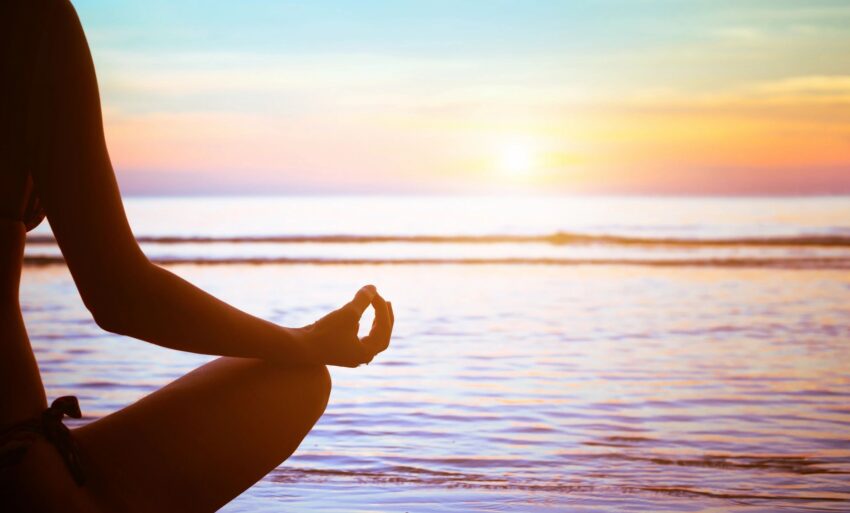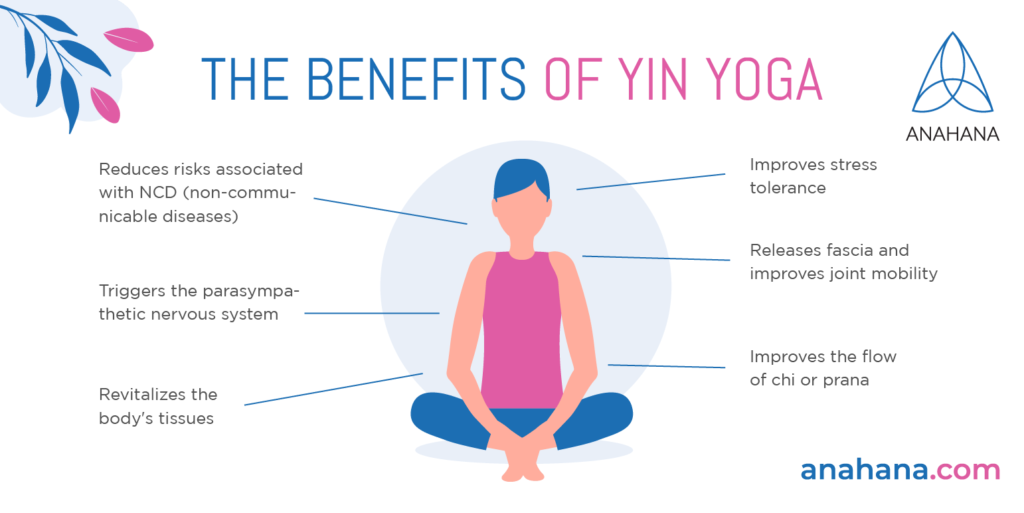What Is Yin Yoga?
Before we get into all the Yin Yoga benefits, let’s take a look at the basics. Traditionally, yin yoga has been known as a slower paced practice that incorporates ancient Chinese medicine principles.
As I began researching yin yoga, I found that the concept of Yin and Yang exist in Hindu philosophy as well, but not as they are represented in the Chinese tradition. In Hatha Yoga, dualities within the body are presented to be overcome, such as in the case of an imbalance in the strength between your right and left arms. Analogues to this can be seen throughout every realm of Yoga, including Bhakti Yoga, which aims to overcome the dualities of the real and the illusory by chanting the name of your highest personage of Godhood. In other words, the principle of polar opposites in mutual interaction is to be found everywhere in the Vedas short of the terms “Yin” and “Yang.”
Yin Yoga: A Gentle Way to Improve Flexibility and Reduce Pain
Yin yoga is a slow-paced style of yoga that focuses on holding postures for longer periods of time, typically 2-5 minutes. This type of yoga is said to have many benefits, including improved flexibility, reduced pain, and improved overall health and well-being.
Yin yoga is based on the traditional Chinese concepts of yin and yang. Yin is associated with the feminine, the passive, and the receptive. Yang is associated with the masculine, the active, and the assertive. In yin yoga, the goal is to balance these two opposing forces by holding postures that target the yin tissues of the body.
The yin tissues of the body include the fascia, ligaments, and tendons. These tissues are often overlooked in traditional forms of yoga, but they play an important role in supporting the body and allowing it to move freely. Yin yoga helps to strengthen and stretch these tissues, which can lead to a number of benefits, including improved flexibility, reduced pain, and better posture.
Full Body Yin Yoga Routine
Again, Yin yoga develops the anatomy around your muscles rather than your muscle fibers directly by holding an asana for as long as possible. Fascia development begins within several minutes of holding a posture, so the key here is time. If practicing for only an hour, only a few asanas should be performed. If you plan to work on 5 asanas, remain in each posture for about 12 minutes. The longer the better, but choose your asanas carefully. The curated list below is a good starting point.
Looking for even more Yin Yoga health benefits? Be sure to check out our friends at Mind Body Green!
The Different Types of Yin Yoga Poses
There are many different types of yin yoga poses, but they all share some common characteristics. First, yin yoga poses are typically held for longer periods of time than other types of yoga poses. This allows the yin tissues to slowly stretch and release. Second, yin yoga poses are often passive, meaning that you do not need to use any muscular effort to hold them. This allows you to relax into the pose and focus on your breath.
How Yin Yoga Poses Target Different Areas of the Body
The different yin yoga poses target different areas of the body. For example, the reclining bound angle pose (supta baddha konasana) is a great pose for opening the hips and groin. The pigeon pose (eka pada rajakapotasana) is a great pose for stretching the inner thighs and groin. And the seated forward bend (paschimottanasana) is a great pose for stretching the hamstrings and spine.
Technique
The technique of Yin Yoga is in all ways identical to traditional Hatha Yoga. The only difference is the duration that you hold a pose for. If you can relax into deeper and longer breaths, do so. Hold each posture for 12-15 minutes apiece. Remember, the usual breathing rules also apply, try to practice normal, even, and controlled breathing while holding poses.
Squat
Simply sit on your heels as far as you can without lifting them off the ground. Both feet should remain flat on the floor. This can be a lot tougher than it sounds at first. It’s one of the more intense asanas on this list.
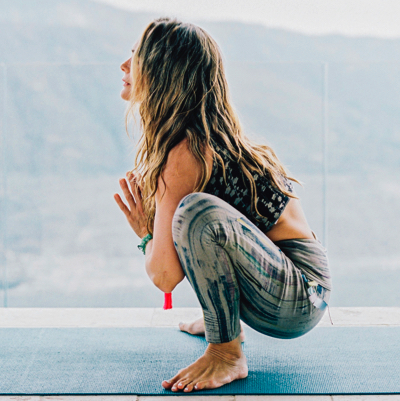
Butterfly pose
Keeping your back straight, sit with both of your feet together and tuck them in as close to yourself as you can. Spread your knees on either side toward the floor, supporting them with your elbows if needed. After holding this pose for some time, you can lean forward and hold again.
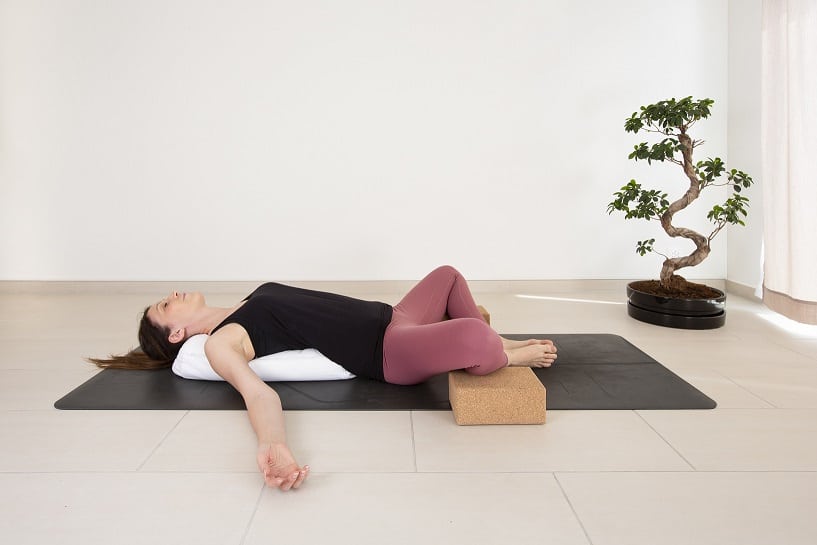
courtesy of Yoga Poses 4 You
Child’s Pose
The first posture in this flow is the child’s pose. Begin by sitting with shins on the ground. Raise your arms in the air and fall slowly forward until your head rests on the ground. Keep your whole body extended forward and elongated, stretching your fingertips as far as far forward as you can.
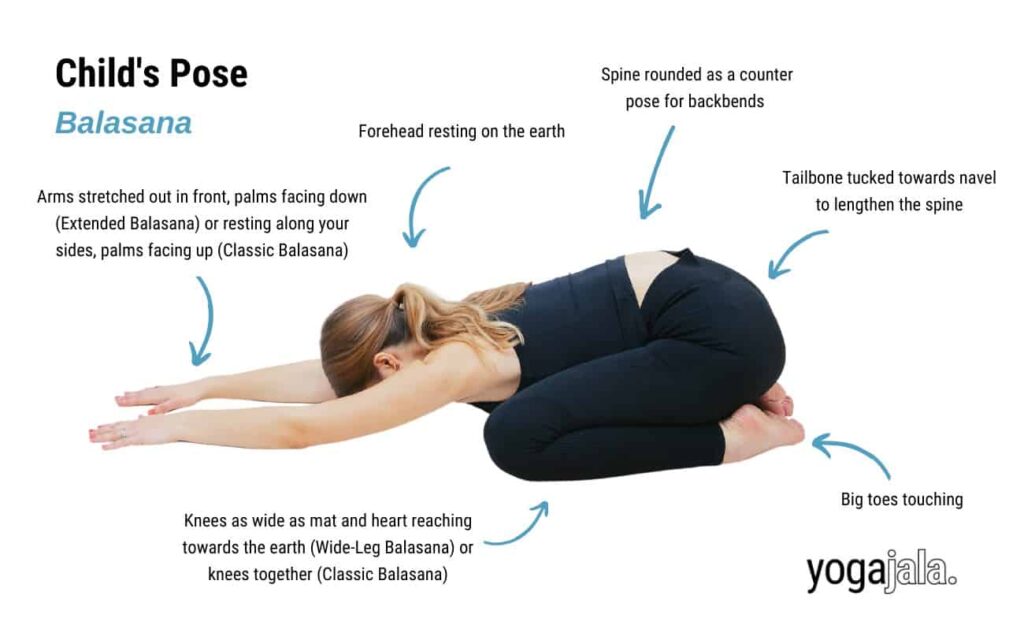
courtesy of yogajala.com
Pigeon
To perform the pigeon posture, sit on the floor with one leg extended back and the other crossed in front so that your heel meets your thigh. Both hands should be flat on the floor in front of you, roughly aligned with your knee. Extend your spine so that you are as tall as you can be in this posture, looking straight forward.
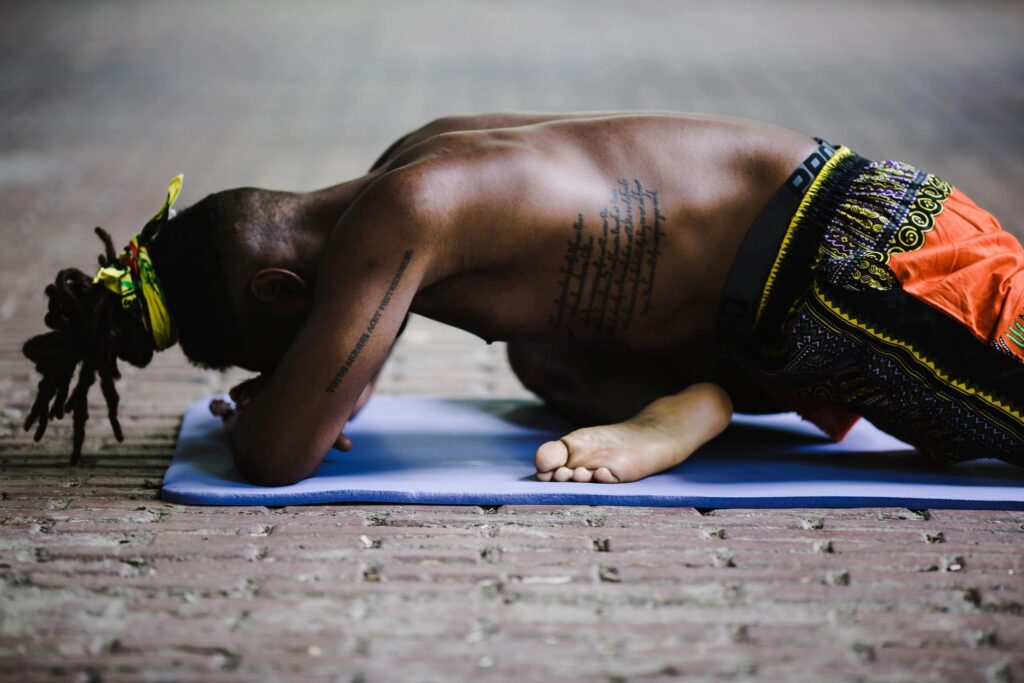
Savasana / Corpse Pose
This is another deceptively simple one. Lie flat on your back with your palms face upward. Elongate your spine so that your back is lying evenly on the ground at every point. Then, gradually relax from head to toe.
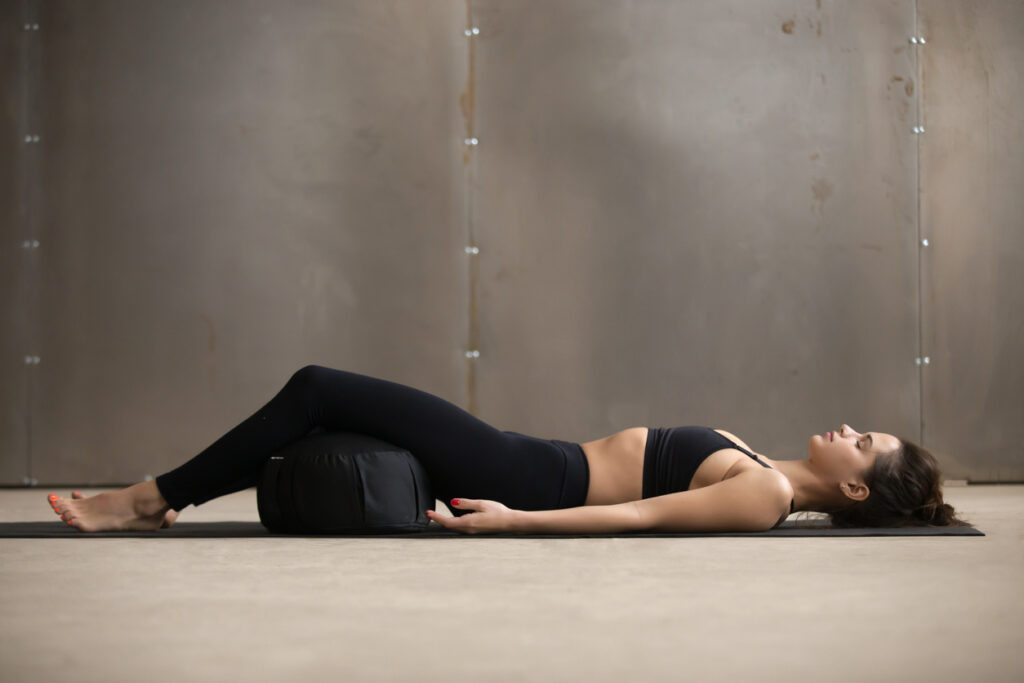
courtesy of spineuniverse.com
Another great pose to add to your Yin practice is Easy Pose.
The Benefits of Yin Yoga
The benefits of yin yoga are numerous. Some of the most common benefits include:
- Improved flexibility: Yin yoga helps to stretch the deep connective tissues of the body, which can lead to improved flexibility over time.
- Reduced pain: Yin yoga can help to reduce pain in the back, neck, hips, and other areas of the body. This is because yin yoga helps to release tension in the deep tissues.
- Improved sleep: Yin yoga can help to improve sleep quality by reducing stress and anxiety.
- Reduced stress and anxiety: Yin yoga is a great way to reduce stress and anxiety. This is because yin yoga helps to promote relaxation and mindfulness.
- Enhanced relaxation: Yin yoga is a very relaxing practice. It can help to calm the mind and body, and promote a sense of peace and well-being.
- Improved circulation: Yin yoga can help to improve circulation throughout the body. This can help to reduce inflammation and improve overall health.
- Strengthened connective tissue: Yin yoga helps to strengthen the connective tissues of the body. This can help to improve posture and reduce the risk of injury.
- Balanced energy flow: Yin yoga can help to balance the flow of energy in the body. This can lead to a number of benefits, including improved mental clarity and physical vitality.
Who Should Do Yin Yoga?
Yin yoga is a gentle form of yoga that is suitable for people of all ages and fitness levels. However, it is especially beneficial for people who are looking to improve their flexibility, reduce pain, or improve their sleep. Yin yoga can also be a helpful way to reduce stress and anxiety.
How to Start Yin Yoga
If you are new to yin yoga, it is a good idea to start with a beginner’s class. This will give you a chance to learn the basics of the practice and to get comfortable with the poses. You can also find yin yoga DVDs and online resources that can help you learn the practice at home.
Conclusion
Yin yoga is a great way to improve your flexibility, reduce pain, and improve your overall health and well-being. If you are looking for a gentle and relaxing form of yoga, yin yoga is a great option.
Here are some additional tips for practicing yin yoga:
- Use props to support your body in the poses. This can help you to relax more deeply into the pose and prevent injury.
- Listen to your body and don’t push yourself too hard. If you experience any pain, stop the pose immediately.
- Be patient and consistent with your practice. The benefits of yin yoga will come with time and regular practice

